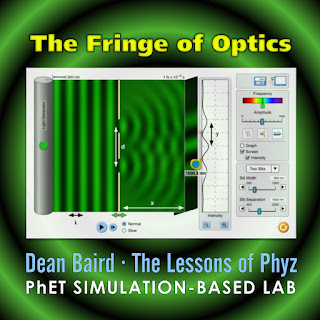Use PhET's Wave Interference sim to construct the mathematical relation describing interference patterns
The modern study of light began in the late 1600s and early 1700s with Isaac Newton in England and Christiaan Huygens in the Netherlands. Newton theorized that light consisted of particles. Huygens theorized that light consisted of waves. In 1801, Thomas Young offered convincing evidence for the wave model of light when he demonstrated that light could produce an interference pattern.
Because light wave interference produces bands of light and dark, the results are often referred to as fringe patterns. The pattern produced depends on the characteristics of the light and the arrangement used to produce it. PhET's Wave Interference simulation allows us to manipulate the light and interference arrangement. By observing the consequences of these manipulations, we can put together the mathematical expression that relates the various variables to one another.
This activity brings students to an operational proportionality, but does not get to the full equation (with sine).
The Fringe of Optics [PhET] at Teachers Pay Teachers
Includes
Student document (print-friendly Google Docs file on Google Drive)
Answer key

No comments:
Post a Comment